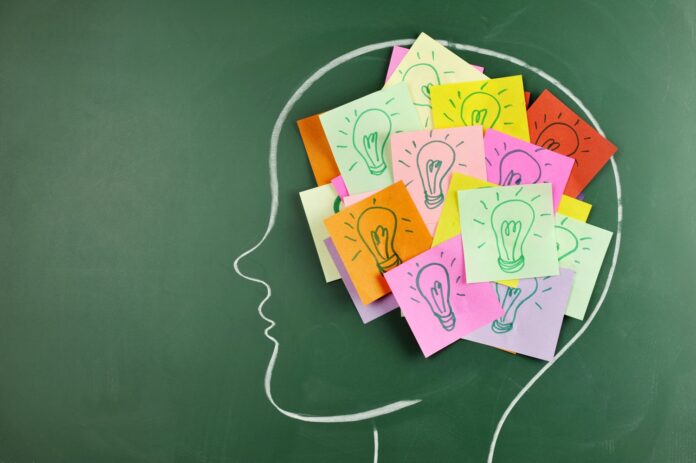In the vast world of learning strategies, there are few methods that have stood the test of time and scientific scrutiny quite like flashcards and spaced repetition. These tools, when wielded correctly, can supercharge our brains to remember more in less time.
These seemingly simple strategies harness powerful cognitive principles, helping learners transform fleeting bits of information into long-lasting knowledge. If you want to test the effectiveness of these tools, Gizmo can help you.
Science of Remembering

Every moment we live, our brains are bombarded with information. But not everything sticks. Memory, in essence, is a system that filters, stores, and retrieves. When we want to remember something, our brain moves it from short-term to long-term storage through a process called consolidation.
But, this process isn’t foolproof. The challenge lies in making sure the information we deem important doesn’t get lost in the shuffle.
One of the most effective strategies to enhance this process is ‘active recall.’ It’s the act of trying to remember something without looking at the source. Think of it like a mental workout; the strain of trying to recall something strengthens the memory pathway.
Flashcards, as we’ll soon see, are perfect for this.
Forgetting Curve
German psychologist Hermann Ebbinghaus made a groundbreaking discovery in the 1880s. He found that our memory of new information fades rapidly after we learn it, following a predictable pattern called the ‘Forgetting Curve.’
But, there’s good news. Every time we review that information, the decline slows down, making the memory stronger and more durable.
Ebbinghaus’s findings are crucial for our understanding of spaced repetition. To counteract forgetting, we don’t just need to review, but review at optimal intervals, which spaced repetition techniques utilize to perfection.
How Effective are Flashcards?

Flashcards, small cards with a prompt on one side and an answer on the other, have been champions of efficient learning for decades.
Simplicity and Focus
The genius of flashcards lies in their simplicity. They distill complex topics down to their essence, allowing the learner to focus on one piece of information at a time. By eliminating unnecessary distractions, flashcards create a streamlined learning environment where our brains can fully engage with the content.
Moreover, the very act of creating flashcards can be educational. When we translate expansive topics into concise questions and answers, we’re forced to process the information deeply, ensuring a better grasp and long-term retention.
Active Recall in Action
Flashcards are the quintessential tool for active recall. When we look at the question side of a card and try to remember the answer, we’re engaging in this potent memory-strengthening process.
Over time, as we shuffle and review our deck, these questions become easier, signaling that the information has been solidly integrated into our long-term memory.
But, it’s not just about reviewing them once. The frequency and timing of these reviews, based on the principles of spaced repetition, can maximize the efficacy of flashcards.
Spaced Repetition

While flashcards help with the ‘what’ of studying, spaced repetition helps with the ‘when.’ It’s a system that determines the optimal times to review information to ensure long-term retention.
Optimal Gaps for Memory Retention
The core idea behind spaced repetition is reviewing information just as you’re about to forget it. This capitalizes on the Forgetting Curve, ensuring that each review is effective.
As you review and remember, the intervals between these reviews increase, because the memory gets stronger each time.
Several software applications use algorithms to determine these intervals, making it easier for learners. By adhering to these schedules, one can drastically reduce study time while increasing memory retention.
Combining Flashcards with Spaced Repetition
Marrying the active recall power of flashcards with the timing wizardry of spaced repetition results in a formidable learning system. Software like Anki, Quizlet, and SuperMemo have combined these principles, offering learners tools that dynamically adjust review schedules based on individual performance.
When we use such a combined approach, we’re not just passively ingesting information. We’re actively interacting with it, ensuring that it’s not just stored, but becomes an integral part of our knowledge bank.
Importance of the Design

Not all flashcards are created equal. The efficacy of a flashcard greatly depends on its design and content.
The Rule of One
Each flashcard should represent one idea, one concept, or one fact. This is known as the “Rule of One.” When our cards adhere to this principle, they become easy to digest. It helps avoid cognitive overload, ensuring that our brain doesn’t waste energy on deciphering the card but focuses solely on the recall.
Moreover, when a card has multiple points or ideas, it becomes difficult to pinpoint what exactly is being remembered or where the confusion lies. Keeping it to one idea per card aids in precise feedback and clearer understanding.
Use of Imagery and Mnemonics
A picture is worth a thousand words. Including images on flashcards not only makes them engaging but also capitalizes on our brain’s ability to process and remember visual information effectively.
Similarly, mnemonics or memory aids can be invaluable. Whether it’s a rhyme, acronym, or a story, mnemonics simplify complex information into memorable chunks.
How to Overcome Potential Challenges?

While these tools are powerful, they are not without challenges. Recognizing and addressing these can enhance their utility.
The Initial Overwhelm
When starting with flashcards and spaced repetition, the sheer number of cards or the frequency of reviews can be overwhelming. It’s essential to start small, focusing on the most crucial information. Over time, as you get comfortable, you can expand your deck.
Consistency is key. A daily habit, even if short, can yield better results than sporadic, longer sessions. Remember, it’s a marathon, not a sprint.
The Trap of Overconfidence
A potential pitfall with flashcards is breezing through them too quickly, mistaking familiarity for knowledge.
Just because you recognize an answer doesn’t mean you recall it. It’s vital to be honest with yourself during reviews. If you’re unsure about a card, mark it as such and review it sooner.
Conclusion

It’s essential to remember that, like any tool, the effectiveness of flashcards and spaced repetition lies in their consistent and thoughtful application. It might seem daunting initially, but the rewards, in terms of time saved and knowledge gained, are well worth the effort.
Discover these top 10 students’ tips for remote learning in 2024.







